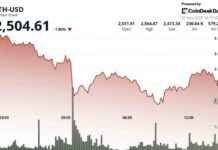The Floki Debit Card is now making waves in the global crypto community, with its availability in 31 European countries announced by the Floki team. This new development opens up a world of possibilities for users, allowing them to make crypto payments at any merchant that accepts Visa or Mastercard.
Features of the Floki Debit Card
One of the key features of the Floki Debit Card is the convenience it offers users. With zero transaction fees, zero percent exchange rate fees, and multi-chain support for eight blockchain networks, users can enjoy seamless transactions without worrying about additional charges.
Availability and Costs
While the physical card is currently live in Europe and will expand to more countries over time, virtual gift cards are already available worldwide. However, it’s important to note that the card is not accessible in OFAC sanctioned countries and jurisdictions, as announced by Floki.
Users interested in getting their hands on the Floki Debit Card can do so by paying a one-time fee of €32 for the physical card, along with shipping costs. The virtual card, on the other hand, comes with a one-time fee of €10, with a 2% top-up fee for both options.
Expansion Plans and Future Initiatives
This move by Floki is part of a larger strategy to expand its services beyond being just a meme coin. The team has revealed plans for debit cards, staking, and other services to transform the project into a top cryptocurrency ecosystem. Additionally, the highly anticipated launch of the metaverse blockchain game Valhalla, though delayed to the first quarter of 2025, remains a focal point for the project’s future growth.
In the midst of these developments, Floki faced a setback in its native token’s price due to delays in its flagship utility project. However, the team emphasized that these delays were necessary to address security concerns raised during a recent audit, prioritizing user safety above all else.














